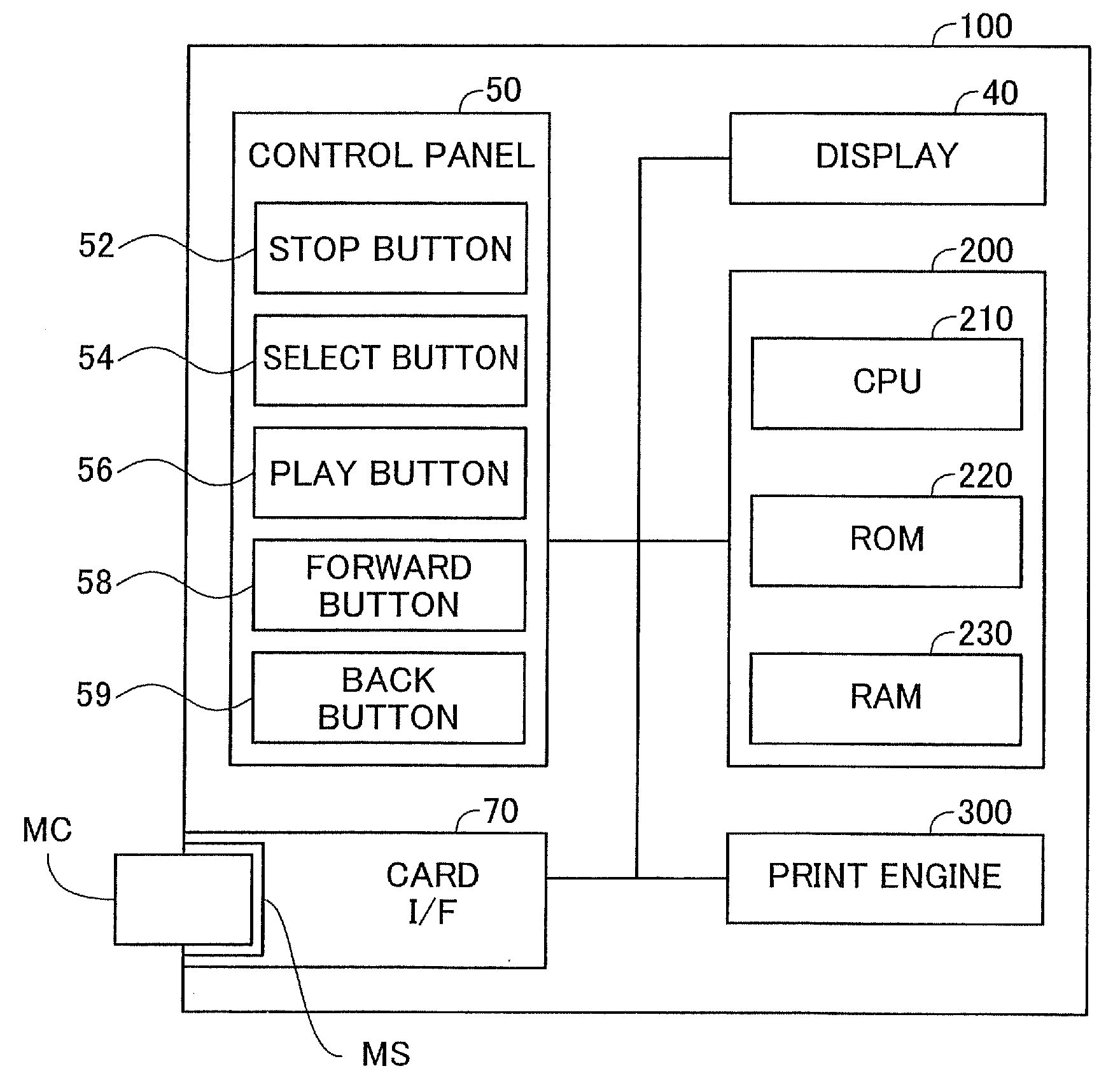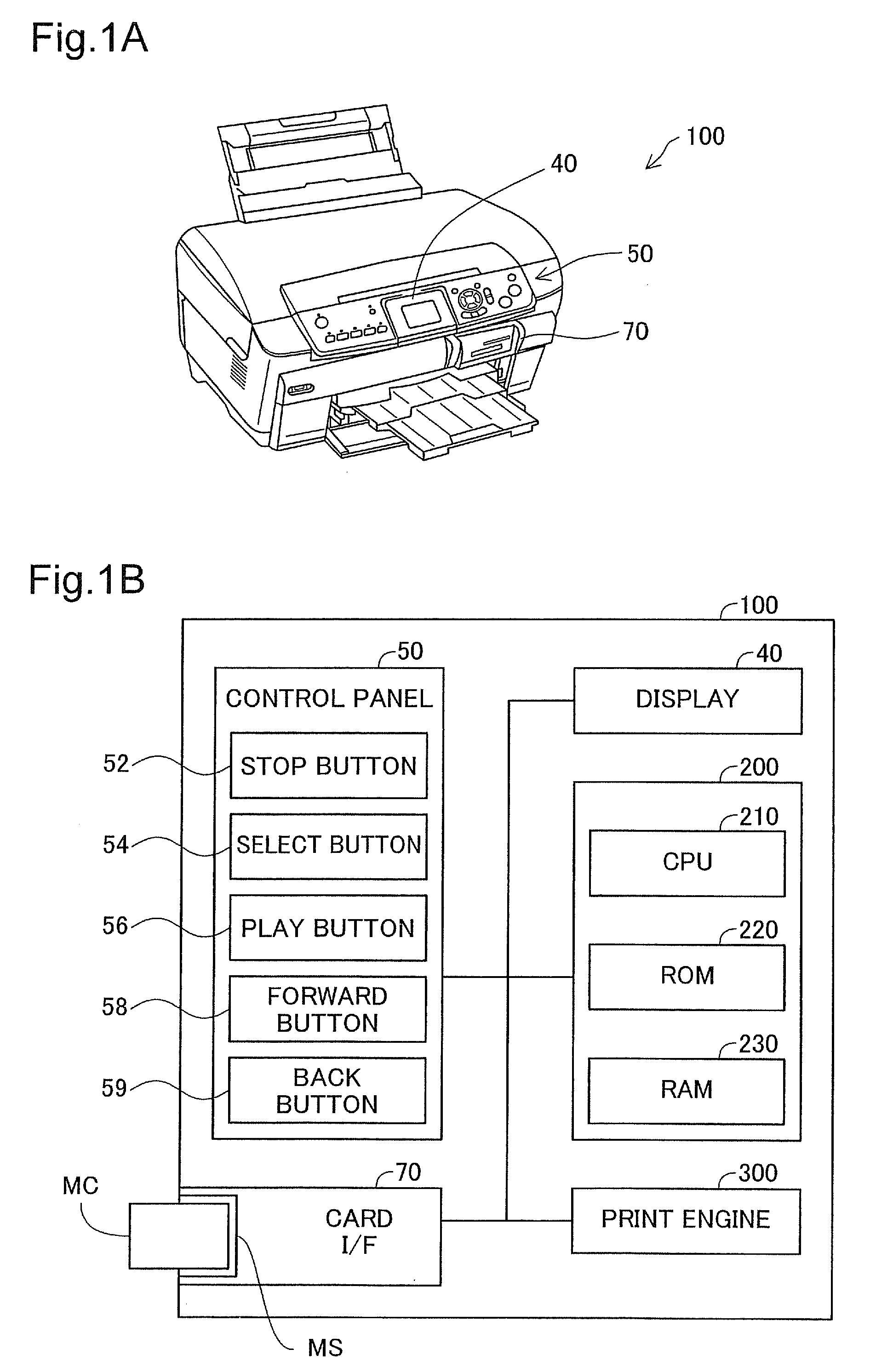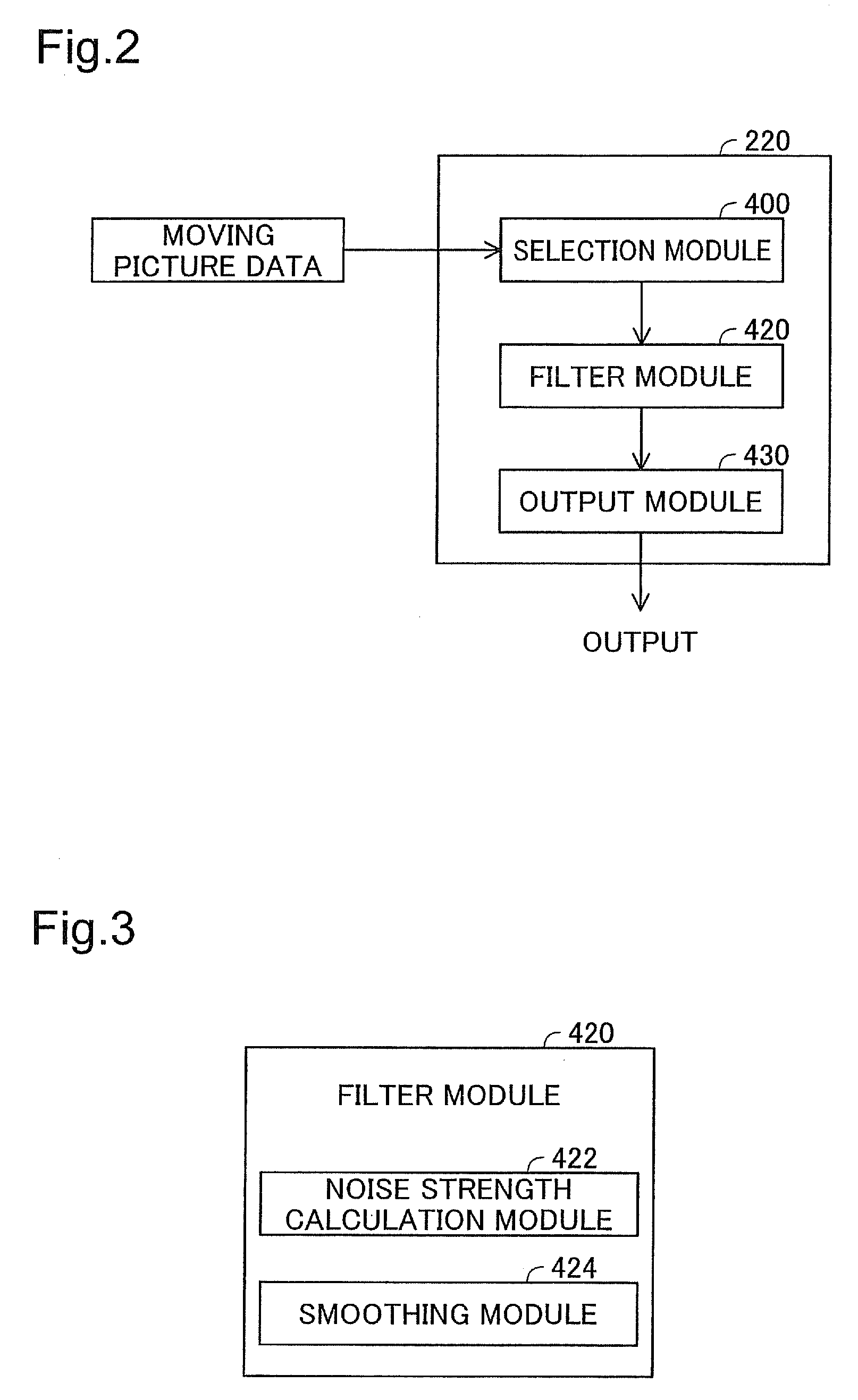Apparatus, Method, and Program Product for Image Processing
- Summary
- Abstract
- Description
- Claims
- Application Information
AI Technical Summary
Benefits of technology
Problems solved by technology
Method used
Image
Examples
embodiment 1
A.
B. Embodiment 2:
C. Embodiment 3:
D. Embodiment 4:
E. Embodiment 5:
F. Embodiment 6:
G. Embodiment 7:
H. Embodiment 8:
I. Embodiment 9:
J. Modified Embodiments:
A. Embodiment 1
[0040]FIGS. 1A and 1B are illustrations depicting a printer according to an embodiment of the present invention. FIG. 1A depicts the exterior of a printer 100; FIG. 1B is a simplified depiction of the configuration of the printer 100. As depicted in FIG. 1A, this printer 100 includes a display 40, a control panel 50, and a memory card interface 70. As depicted in FIG. 1B, the printer 100 further includes a controller 200 and a print engine 300.
[0041]The controller 200 is a computer that includes a CPU 210, a ROM 220, and a RAM 230. This controller 200 controls the various constituent elements of the printer 100. The print engine 300 constitutes a printing mechanism for carrying out printing according to print data provided to it. As the printing mechanism, it would be possible to employ various printing mechanisms su...
embodiment 2
B. Embodiment 2
[0089]FIG. 14 is an illustration depicting an overview of another embodiment of the smoothing process. The only difference from the embodiment depicted in FIG. 13 is that the magnitude of smoothing becomes stronger as the pixel position within a pixel block become closer to the boundary line. The device configuration and process steps are the same as in the embodiment illustrated in FIGS. 1A-1B to 4, and FIG. 6.
[0090]The drawing depicts an example of a smoothing level matrix SL. This 8*8 matrix SL indicates a smoothing level at each pixel position within a pixel block. In the example of FIG. 14, the level is set to any of levels 1 to 4. Higher levels mean stronger smoothing. Also, the level is set to a greater value with decreasing distance from the boundary line Bn, Be, Bs, Bw of the pixel block.
[0091]The drawing depicts the target image SI and the pixel block group BG similar to those in FIG. 7. The smoothing module 424 (FIG. 3) determines a representative normalize...
embodiment 3
C. Embodiment 3
[0095]FIG. 15 is an illustration depicting an overview of yet another embodiment of the smoothing process. The only difference from the embodiment depicted in FIG. 13 is that the normalized strength calculated through interpolation depending on pixel position within the pixel block is used in place of the representative normalized strength αf The device configuration and process steps are the same as in the embodiment illustrated in FIGS. 1A-1B to 4, and FIG. 6.
[0096]FIG. 15 depicts an overview of the smoothing process of a given target pixel PXx. In this embodiment, the smoothing module 424 (FIG. 3) calculates a horizontal normalized strength αph1 through linear interpolation of the horizontal direction hr, and a vertical normalized strength αpv1 through linear interpolation of the vertical direction vt.
[0097]The horizontal normalized strength αph1 is calculated from the left normalized strength αw of the left boundary line Bw, and the right normalized strength αe of...
PUM
 Login to View More
Login to View More Abstract
Description
Claims
Application Information
 Login to View More
Login to View More - R&D
- Intellectual Property
- Life Sciences
- Materials
- Tech Scout
- Unparalleled Data Quality
- Higher Quality Content
- 60% Fewer Hallucinations
Browse by: Latest US Patents, China's latest patents, Technical Efficacy Thesaurus, Application Domain, Technology Topic, Popular Technical Reports.
© 2025 PatSnap. All rights reserved.Legal|Privacy policy|Modern Slavery Act Transparency Statement|Sitemap|About US| Contact US: help@patsnap.com



